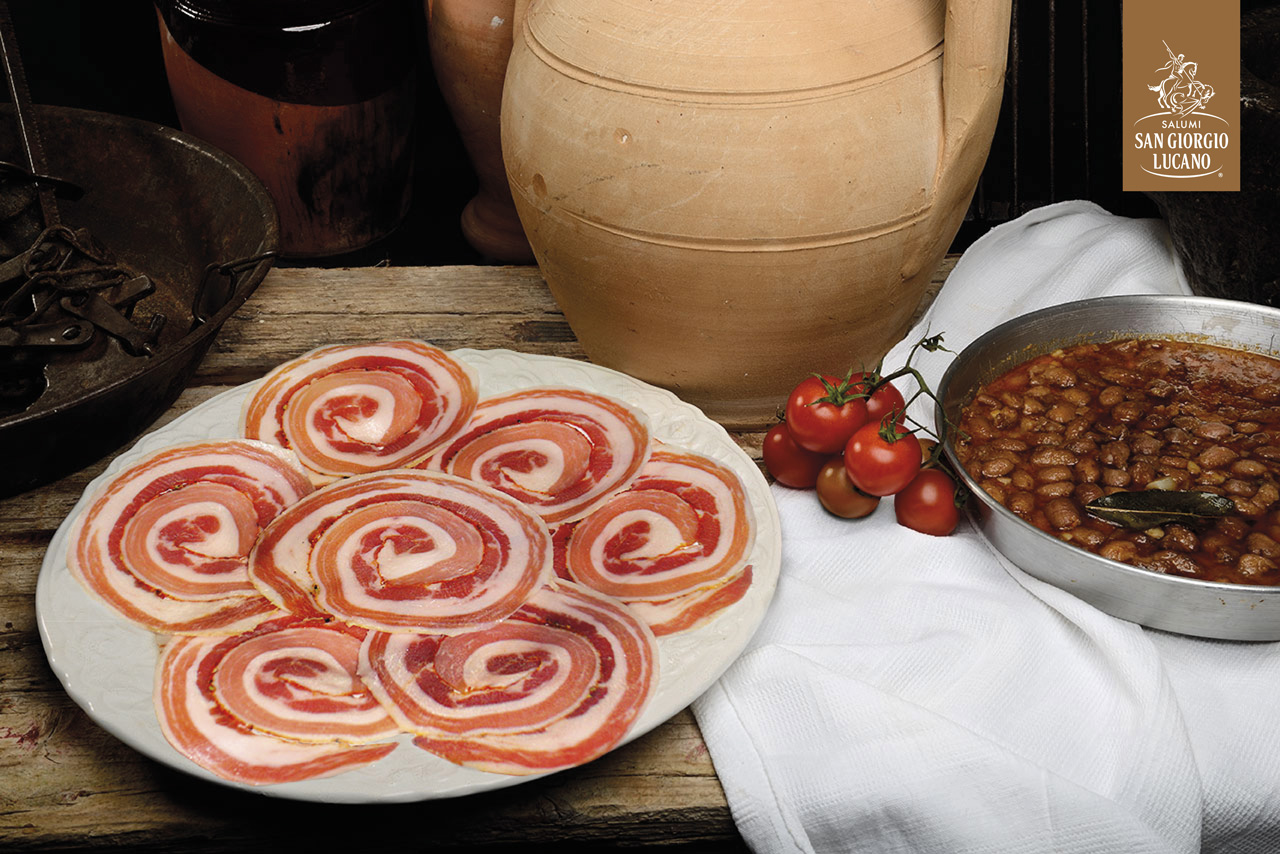
Rolled pancetta differs to the flat one in shape. The former when sliced looks like a vortex where bright red, pink and white alternate harmoniously. The latter has the same colour alternation but horizontally.
This plus a part of the process, dedicated specially to the rolled version.
They are both from the same part of the pig: the belly. This type is boned and salted for from seven to nine days with quarry salt. Both types are cured in exactly the same way; they use natural flavours, Tellicherry black pepper in grains and crushed, plus pepper cultivated in Basilicata for the mild version and chilli for the spicy one.
While flat pancetta is ready for ageing to start, the rolled version has to take on its characteristic shape.
Rolling is a very delicate operation. It must enable the parts to merge to ensure that slices are soft and compact. It is stuffed into natural intestine, hand-tied, pricked to release the air. The rolled pancetta will then be moved to the cells to be aged. This, based on size, varies from 100 to 120 days.
Basically, the difference between the flat and rolled versions is shape, processing and ageing times. This all has a considerable effect on the fragrance and taste of the two cold cuts.
The flat one is more delicate in taste with a harmonious aromatic touch. The rolled one has that classic, timeless taste. Soft, tasty with more exuberant aromatic notes resulting from the time spent in the natural intestine and the long ageing period.


Rolled Pancettas
Rolled pancetta differs to the flat one in shape. The former when sliced looks like a vortex where bright red, pink and white alternate harmoniously. The latter has the same colour alternation but horizontally.
This plus a part of the process, dedicated specially to the rolled version.
They are both from the same part of the pig: the belly. This type is boned and salted for from seven to nine days with quarry salt. Both types are cured in exactly the same way; they use natural flavours, Tellicherry black pepper in grains and crushed, plus pepper cultivated in Basilicata for the mild version and chilli for the spicy one.
While flat pancetta is ready for ageing to start, the rolled version has to take on its characteristic shape.
Rolling is a very delicate operation. It must enable the parts to merge to ensure that slices are soft and compact. It is stuffed into natural intestine, hand-tied, pricked to release the air. The rolled pancetta will then be moved to the cells to be aged. This, based on size, varies from 100 to 120 days.
Basically, the difference between the flat and rolled versions is shape, processing and ageing times. This all has a considerable effect on the fragrance and taste of the two cold cuts.
The flat one is more delicate in taste with a harmonious aromatic touch. The rolled one has that classic, timeless taste. Soft, tasty with more exuberant aromatic notes resulting from the time spent in the natural intestine and the long ageing period.



